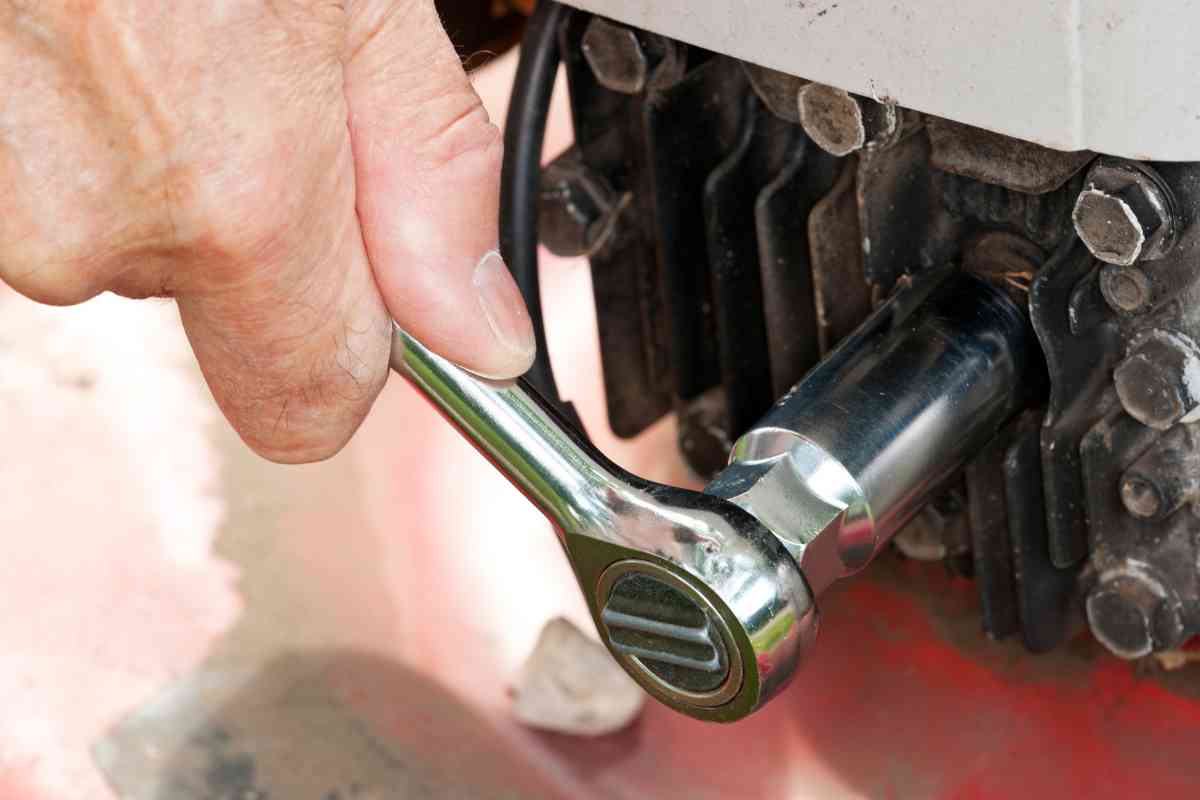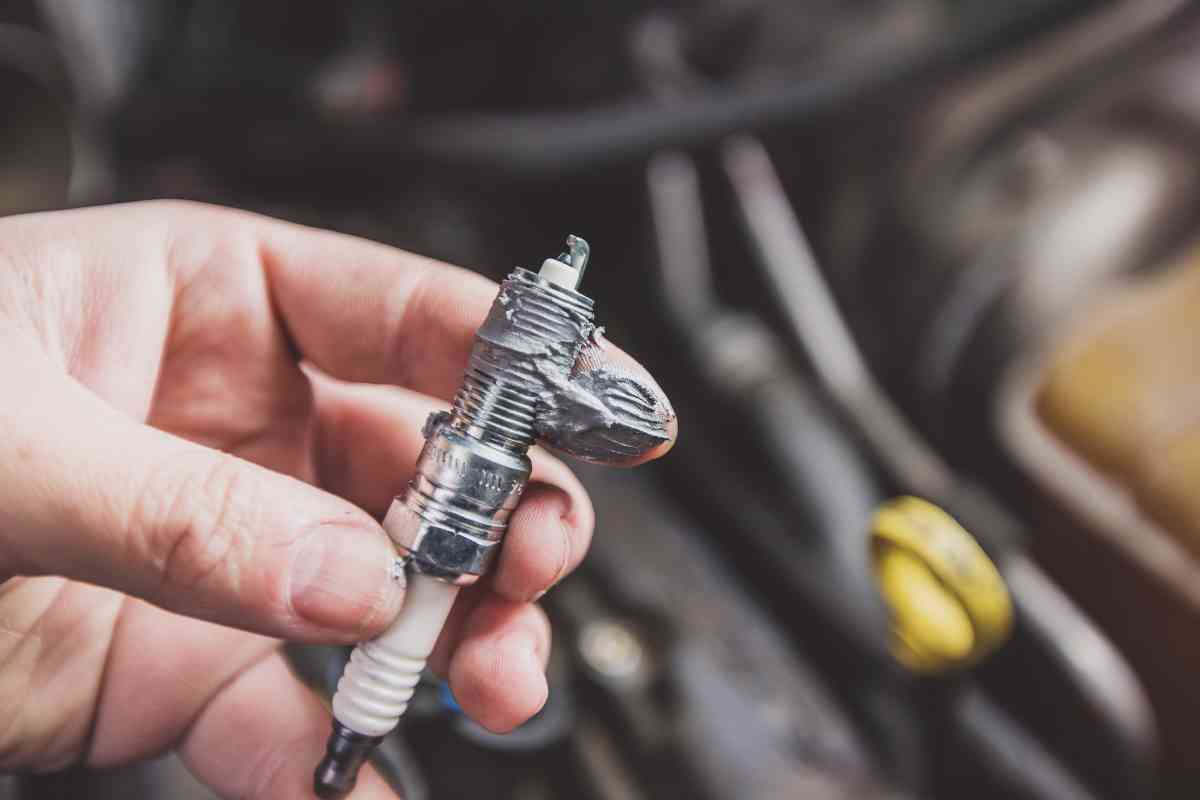How To Remove Spark Plugs That Are Stuck: Step By Step Guide for Easy Extraction
Spark plugs are essential components of your vehicle’s ignition system, playing a crucial role in igniting the air-fuel mixture within the combustion chamber. However, there are instances where spark plugs get stuck due to corrosion, overheating or improper installation. When this occurs, removing them can become a challenging task for car owners and mechanics alike.

How do you remove stuck spark plugs?
Gather the necessary tools, including a ratchet wrench, spark plug socket, and penetrating oil. Apply penetrating oil to the spark plug, and wait for it to sit for 15 to 20 minutes. Use a spark plug socket and ratchet with an extension, applying moderate pressure and turning it counterclockwise to remove the spark plug.
In this article, we will provide you with a step-by-step guide on how to remove stuck spark plugs safely and efficiently. We will discuss the necessary tools, precautions to take, and techniques that will help you successfully accomplish this task without causing damage to your vehicle’s engine.
Gather Necessary Tools
Before beginning the process of removing stuck spark plugs, it’s essential to have the appropriate tools and materials on hand. This will ensure a smooth and efficient process, reducing the risk of causing further damage to the spark plugs or engine.
The following tools and materials are recommended for this task:
- Ratchet wrench
- Spark plug socket
- Extension bars
- Penetrating oil
- Wire brush
- Shop rags
- Thread chaser or tap set (optional)
It’s important to use a spark plug socket specifically designed for this purpose because it has a rubber insert that helps protect the spark plug’s ceramic insulator. Extension bars can be helpful for reaching spark plugs in deeper recesses or tighter spaces.
Penetrating oil and a wire brush are used to clean and lubricate the threads around the spark plug, making it easier to remove. A thread chaser or tap set may be required if the threads are damaged during removal, but this is not always necessary.

Prepare the Engine
Preparing the engine for spark plug removal is crucial for preventing potential damage and ensuring a smooth process. Follow these steps to prepare the engine:
1. Allow the engine to cool: Before you start, ensure the engine has cooled down completely. Working on a hot engine can lead to accidental burns and difficulty in removing the spark plugs.
2. Disconnect the battery: To avoid any electrical issues, disconnect the negative terminal of the car battery.
3. Locate the spark plugs: Find the spark plugs in your engine, which are usually located on the top or side of the engine block. In some engines, they may be hidden underneath a plastic cover.
4. Clean the area: Use a clean, dry cloth or compressed air to remove any debris or dirt surrounding the spark plugs. This will prevent any contaminants from entering the engine when removing the spark plugs.
| Tips |
|---|
| Refer to your vehicle’s manual for the exact location of spark plugs and any additional preparation steps specific to your engine type. |
| Consider wearing safety glasses to protect your eyes from dust and debris while cleaning. |
| Label the spark plug wires before removing them to make reinstallation easier. |
By properly preparing the engine, you’ll create a safe and clean work area to remove stuck spark plugs with minimal risk.
Applying Penetrating Oil
Before attempting to remove a stuck spark plug, it’s a good idea to apply penetrating oil to loosen up any rust, deposits, or debris that may be causing the problem. This section will guide you through the process of applying penetrating oil to a stubborn spark plug.
First, gather the necessary materials: a can of penetrating oil (e.g. WD-40, Liquid Wrench, or PB Blaster), a small brush, and a clean cloth. Follow these steps:
- Allow the engine to cool down: Make sure the engine of your vehicle has had enough time to cool down before attempting to remove spark plugs. This will help prevent burns and allow the oil to work more effectively.
- Clean the area around the spark plug: Using the small brush, gently clean any dirt, grease, or debris from the area immediately surrounding the spark plug. This will allow the penetrating oil to work directly on the issue and prevent further contamination.
- Apply the penetrating oil: Spray a liberal amount of penetrating oil on the area surrounding the stuck spark plug, ensuring that it enters the threads. Allow it to sit for at least 15 to 20 minutes to give it time to penetrate and begin to loosen the rust or debris.
- Wipe any excess: Use a clean cloth to wipe away any excess penetrating oil from the surface of the engine. Be sure to remove it from any areas where it may have pooled up or run off, as it can cause slips or make it difficult to grip the wrench later on.
After completing these steps, your spark plug should be more receptive to removal attempts. Proceed with caution, ensuring that you use the proper tools and techniques to avoid causing damage or further complications.

Loosen the Spark Plugs
Follow these steps to safely and effectively loosen stuck spark plugs:
- Ensure your engine is cold. Allow it to cool for a few hours before attempting to remove the spark plugs. Working on a hot engine can cause burns and damage to the spark plugs.
- Locate the spark plugs by following the spark plug wires. Refer to your vehicle’s manual if you are unsure where they are located.
- Remove the spark plug wires or coil packs. Be gentle and twist slightly as you pull to avoid damaging the wires.
- Clean the area around the spark plugs using a soft brush or compressed air to remove any dirt and debris to prevent them from falling into the engine when the spark plugs are removed.
- Use a spark plug socket and ratchet with an extension to reach the spark plugs. Ensure the socket is properly seated on the spark plug to avoid damage.
- Apply moderate pressure and turn the ratchet counterclockwise to loosen the spark plug. If you encounter significant resistance, stop and reassess the situation to avoid damaging the threads.
- If the spark plug is still stuck, apply a penetrating oil around its base and allow it to sit for 10-15 minutes before attempting to loosen it again.
- Using a breaker bar or wrench instead of a ratchet may help, but use caution and apply force evenly to avoid breaking the spark plug.
- Once the spark plug is loose, use a magnetic or rubber spark plug socket to remove it from the engine. Inspect the spark plug for signs of wear, damage, or cross-threading.
Take your time and work methodically to avoid causing damage to your engine.
Use an Alternative Method
If the traditional method of using a ratchet and socket hasn’t been successful in removing the stuck spark plug, you can try an alternative method. The following techniques can help you loosen and remove the spark plug:
1. Penetrating Oil:
Applying a penetrating oil, such as WD-40 or Liquid Wrench, to the spark plug base can help break down any rust, corrosion or dirt that may be causing the plug to be stuck. Make sure to let the oil sit for a few minutes to work its magic.
2. Tap the Spark Plug:
Create mild vibrations by lightly tapping the spark plug with a small hammer. Be careful not to apply too much force, as this may damage the spark plug. This can help break loose any deposits that might have formed.
3. Use Pliers:
If you can access the spark plug’s end, you can try using pliers to remove it. Be cautious, as excessive force can damage the plug. Remember to grip the plug at its base and turn it counterclockwise.
4. Apply Heat:
Using a heat gun or propane torch, carefully apply heat around the spark plug hole for a few minutes. This can help expand the metal surrounding the spark plug and loosen any debris that’s causing the plug to be stuck. Be cautious of potential fire hazards.
Always exercise caution when attempting these alternative methods, and if you’re unsure of your ability, it’s best to consult a professional mechanic.
Inspect and Replace Spark Plugs
Before starting the process of removing spark plugs, it is essential to inspect them for any signs of wear, damage or deposits. This can help you decide whether they need to be replaced or just cleaned before reinstallation.
Look for any of the following:
- Burnt or worn electrodes
- Cracked insulator
- Carbon buildup
- Oil deposits
If any of these issues are present, replace the spark plug with a new one. When selecting a replacement, ensure that it is compatible with your vehicle’s make and model. Consult your owner’s manual for the appropriate type and gap size.
After replacing the damaged or worn spark plugs, follow these steps to reinstall them:
- Apply a small amount of dielectric grease to the contact points on the new spark plug.
- Insert the spark plug into the socket, and carefully thread it into the cylinder head.
- Using a torque wrench, tighten the spark plug to the manufacturer’s specifications.
- Reattach the spark plug wire or ignition coil.
Once you have successfully reinstalled the spark plugs, test the engine to ensure proper functioning.

Reinstall the Ignition Components
With the stuck spark plug successfully removed, you can now focus on reinstalling the ignition components. Follow these steps for a seamless process:
- Inspect the new spark plug: Confirm that the spark plug is in good condition and compatible with your engine. Look for any visible defects before proceeding.
- Gap the new spark plug: Use a spark plug gap tool to ensure that the gap between the center and ground electrode is according to the manufacturer’s specifications.
- Apply anti-seize compound: Apply a small amount of anti-seize compound to the threads of the new spark plug. This will help prevent future instances of stuck spark plugs.
- Install the new spark plug: Carefully thread the new spark plug into the engine by hand to prevent cross-threading. Once the spark plug is hand-tightened, use a torque wrench to tighten it to the recommended torque specification.
- Reattach the ignition components: Reconnect the spark plug boot or coil-on-plug to the new spark plug. Ensure a secure connection to avoid any loose connections that could lead to misfires.
With these steps, you have successfully reinstalled the ignition components after removing the stuck spark plug. It’s essential to work methodically and follow the correct procedures to ensure a successful outcome and avoid any engine damage.
Conclusion
In summary, removing stuck spark plugs can be a manageable task if you follow these step-by-step instructions. The key is to be patient and use the right tools and techniques:
- Ensure the engine is cool before starting
- Use a compressed air tool to clean the area around the spark plugs
- Apply penetrating oil on the stuck spark plugs and wait for the suggested time
- Use a socket wrench with an appropriate socket size for your spark plugs
- Apply steady, even pressure when loosening the spark plugs
- Inspect the spark plugs once removed and replace if necessary
By following these steps, you can successfully remove stuck spark plugs and maintain your vehicle’s performance. Remember, regular maintenance checks and spark plug replacements are essential for the overall health of your engine. Consult your vehicle’s owner manual for guidelines and recommendations for proper spark plug care.
